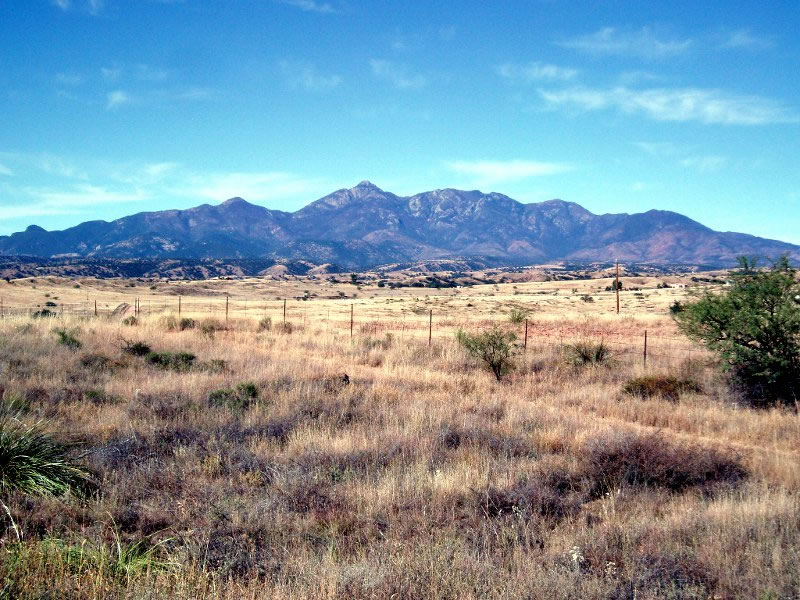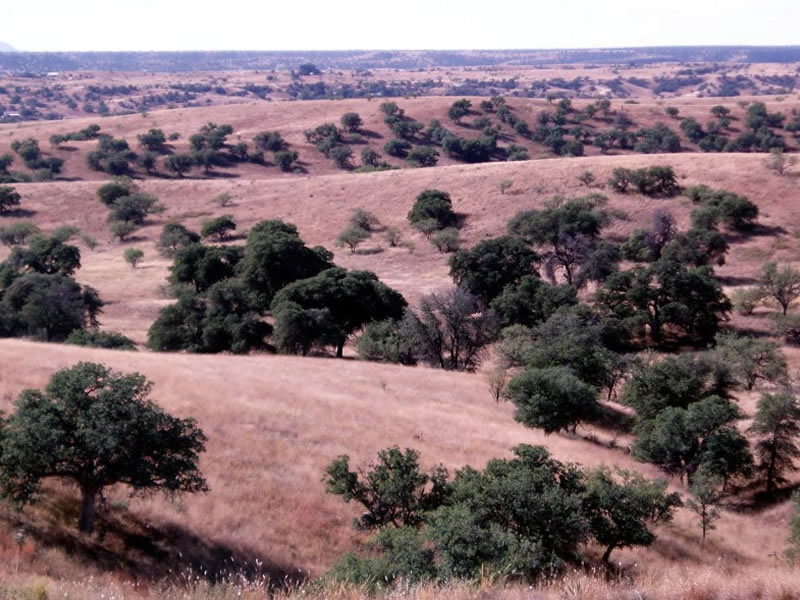Grasslands
Grasslands occur at elevations of 3,500-5,000 feet. They are composed of perennial bunch-grasses and annual grasses in mixed stands with scattered shrubs and succulents. The grasses are usually 1-2 feet tall and the shrubs are up to 10 feet tall. Many different grasses grow in this community including side oats grama (Bouteloua curtipendula) and other grama grasses, squirreltail (Elymus elymoides), plains lovegrass (Eragrostis intermedia), curly-mesquite (Hilaria belangeri), bristly wolfstail (Lycurus setosus), scratchgrass (Muhlenbergia asperifolia), bush muhly (Muhlenbergia porteri), vine mesquite (Panicum obtusum), and slim tridens (Tridens muticus). Grasslands surround the base of many Sky Island mountain ranges. They are particularly well developed in the Canelo Hills between the Huachuca and Patagonia mountains.
In years when late winter rains are adequate, the desert grasslands put on a spectacular wildflower display. Some of the showiest species are red dome blanketflower (Gaillardia pinnatifida), firewheel (G. pulchella), desert zinnia (Zinnia acerosa), caliche globemallow (Sphaeralcea laxa), desert four o’clock (Mirabilis multiflora), desert evening-primrose (Oenothera primiveris), California poppy (Eschscholtzia californica ssp. mexicana), Parry’s beardtongue (Penstemon parryi), and hillside vervain (Verbena neomexicana).
Intensive cattle grazing during the past 200 years has profoundly altered some desert grasslands. Heavy grazing has reduced the perennial grasses’ vigor, disturbed the soil, encouraged establishment of annual grasses, and favored plants (often shrubs) that are unpalatable to cattle. Fire suppression in modern times has further protected fire sensitive shrubs at the expense of fire tolerant grasses. In extreme cases, complete conversion from grassland to scrub has taken place.
Further Reading
Bennett, P.S., M.R. Kunzmann and L.A. Graham. 2004. Descriptions of Arizona vegetation represented on the gap vegetation map. (PDF)
Kloor, K. 2003. Fire {In the Sky}. Audubon Magazine. Sept. 2003.





